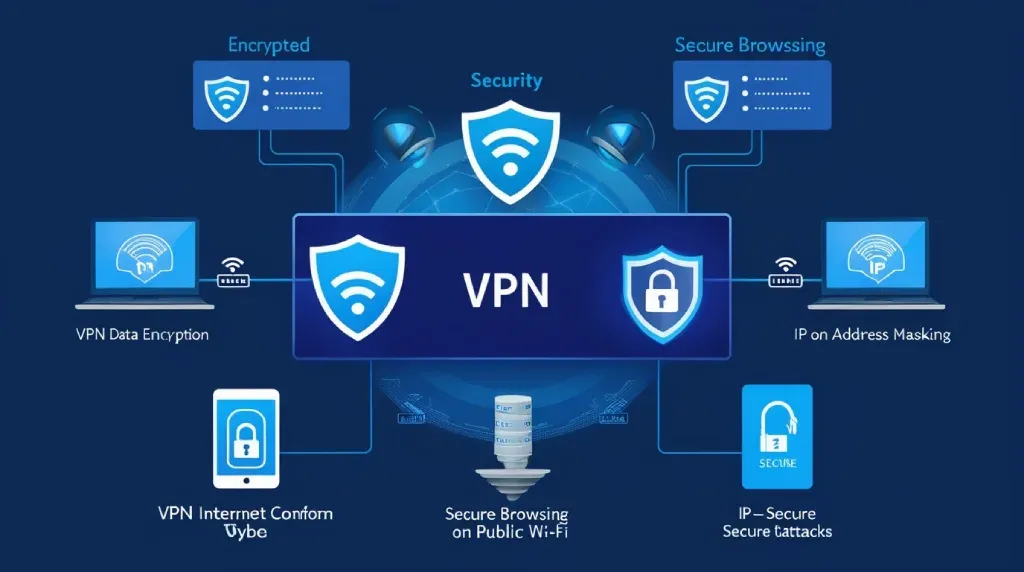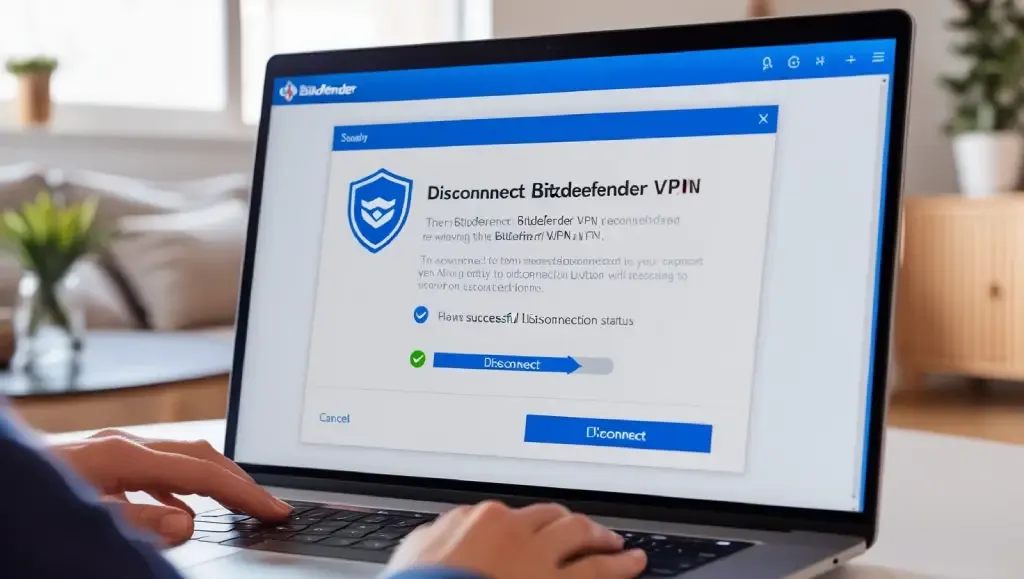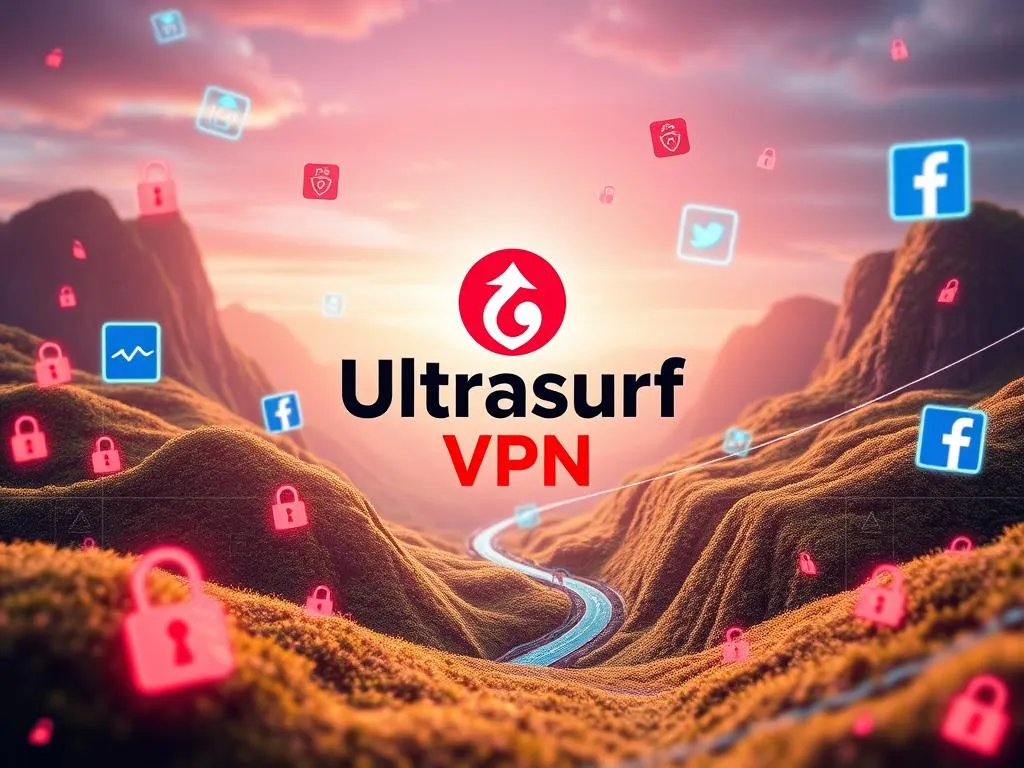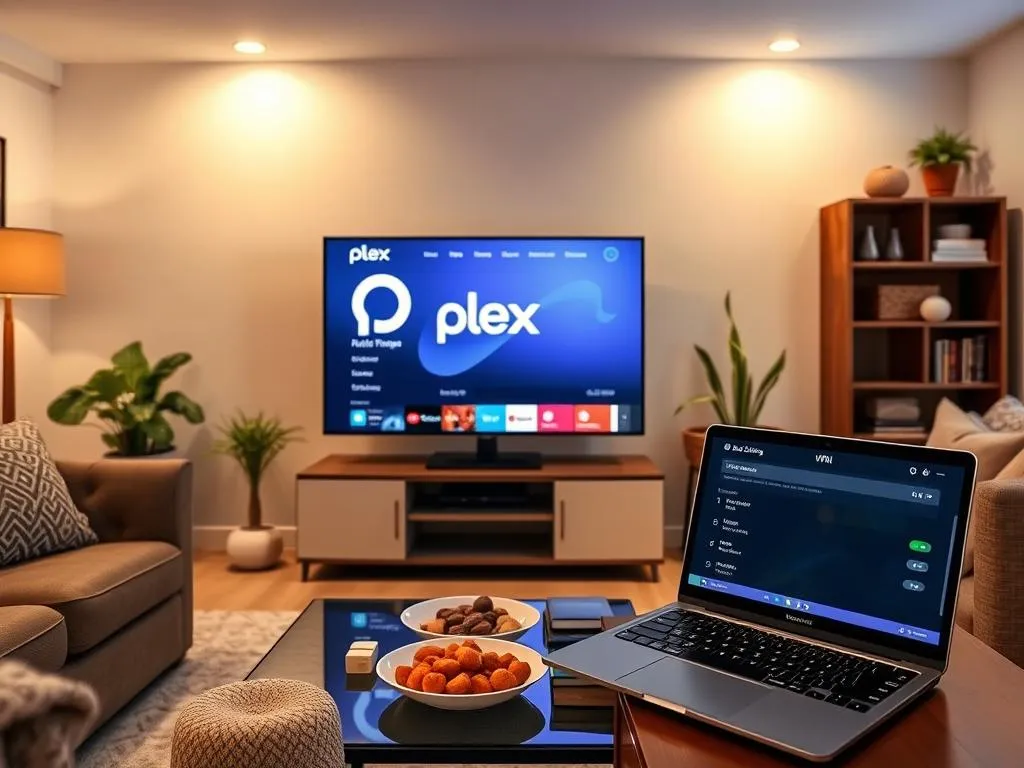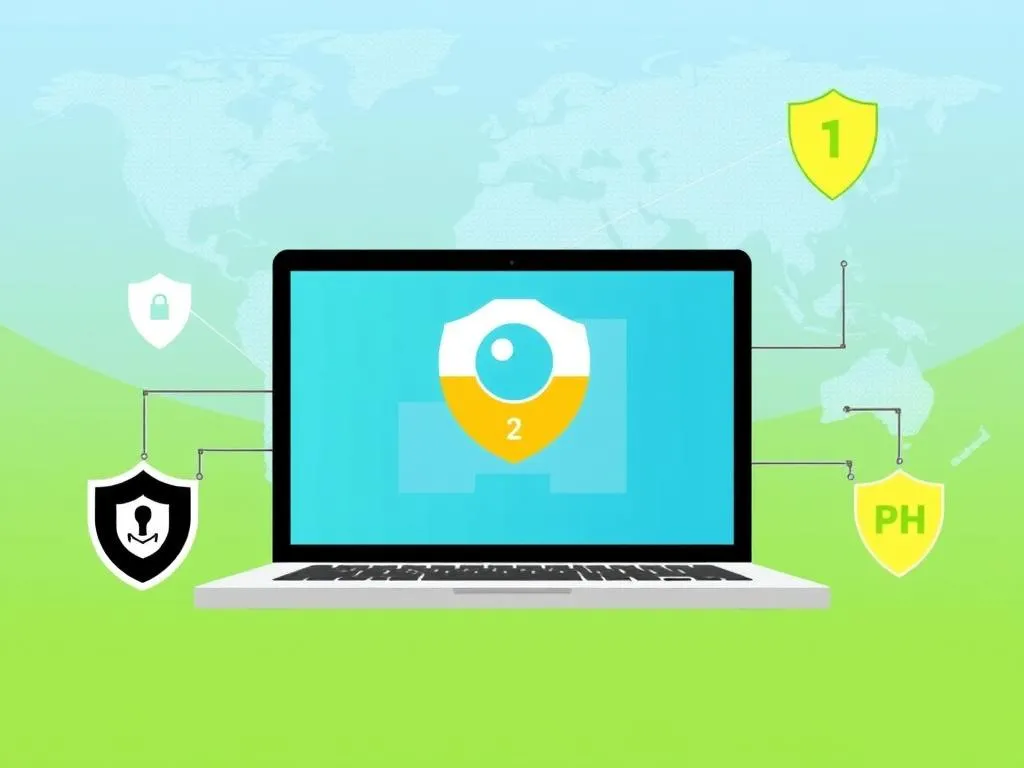Discover how a VPN protects against cyber attacks with encryption, IP masking, and secure browsing. Learn essential tips for enhanced online safety. In today’s world, where cyber threats are constantly evolving, online privacy is a hot topic. Many people are turning to VPNs to guard against cyber attacks, but how exactly does a VPN help protect against these threats? Let’s dive into the key ways a VPN (Virtual Private Network) shields you from online risks, keeps your data private, and enhances your security while browsing. How does a VPN protect against cyber attacks? A VPN serves as a powerful line of defense against various forms of cyber attacks. Its core function is to create a secure, encrypted connection between your device and the internet. This encryption adds a vital layer of protection, making it significantly more challenging for cybercriminals to intercept or access your data. Below, we’ll explore how a VPN offers protection across multiple aspects of online security. 1. Data Encryption One of the primary ways a VPN protects against cyber attacks is through data encryption. When you connect to the internet via a VPN, it encrypts your data, converting it into a coded format that unauthorized users cannot read. This encryption process is a safeguard that transforms sensitive information, such as passwords, banking details, and personal messages, into scrambled text. How Does Encryption Work? Encryption operates by using complex algorithms to lock data, which only authorized parties with a decryption key can unlock. Here’s how it works: Data is coded at the point of origin (your device). Algorithms like AES-256 are often used to secure data, which is almost impossible to break. Data is sent to its destination (website or server) where it is decrypted for viewing. By encrypting data, a VPN makes it unreadable to hackers, significantly reducing the risk of cyber attacks like “man-in-the-middle” attacks, where attackers try to intercept and alter communications between two parties. 2. IP Address Masking A VPN helps protect against cyber attacks by masking your IP address. Your IP address is a unique identifier linked to your device’s internet connection, revealing your approximate location and providing a potential entry point for hackers. By using a VPN, you can hide your IP address and replace it with one from a VPN server, effectively making it harder for cybercriminals to track you. Why IP Masking Matters When you connect through a VPN: Your real IP address is hidden, making it difficult to link online activity back to you. It prevents location-based tracking, especially useful when accessing public or shared networks. Hackers can’t trace the connection back to you, as it appears to originate from the VPN server location. This feature protects you from certain types of cyber attacks, like Distributed Denial of Service (DDoS) attacks, where attackers flood your IP address with data requests to overwhelm your network. 3. Safe Browsing on Public Wi-Fi Public Wi-Fi networks are notoriously insecure and easy for hackers to infiltrate, often serving as a hotspot for cyber attacks. VPNs offer a crucial layer of security on public networks, where a device is at a higher risk of attacks like sniffing, which is when attackers capture data traveling through an unsecured network. Why Use a VPN on Public Wi-Fi? Here’s how a VPN enhances security on public networks: Encrypts all data sent from your device, making it unreadable to anyone attempting to intercept it. Creates a secure tunnel that shields your browsing activity from prying eyes on the same network. Prevents data theft, such as login credentials and credit card numbers, which can be exposed on public Wi-Fi without a VPN. With a VPN, your data is shielded even on these vulnerable networks, ensuring that attackers can’t access your sensitive information. 4. Access Control Access control is an essential part of network security, determining who can access your data. Some VPNs offer advanced features that allow users to control access to their network, blocking unauthorized connections and further reducing the likelihood of cyber attacks. How VPN Access Control Works Access control measures available through VPNs may include: Multi-factor authentication (MFA) for added security, requiring a password and a second authentication step. IP filtering that limits access to trusted devices or locations. Network segmentation to isolate sections of a network, limiting the spread of attacks if they occur. With these added layers, VPNs prevent unauthorized access to your network, providing peace of mind and a solid defense against cyber threats. 5. Prevention of Tracking and Targeting Another key benefit of a VPN is its ability to prevent online tracking and targeting. Many websites, advertisers, and even hackers track users’ online behavior using cookies and browser fingerprints, building a profile of personal information over time. By using a VPN, you can browse more anonymously and avoid being tracked. How VPNs Prevent Tracking When using a VPN, several anti-tracking measures are at work: Hides your IP address, so websites and third parties cannot link your activity back to you. Blocks advertising networks from profiling you based on browsing patterns. Prevents targeted ads from following you across websites, thanks to masked IP addresses. Without tracking, your personal data stays private, and you’re less susceptible to targeted attacks or phishing attempts, where attackers try to gain sensitive information through deceptive communications. 6. Avoiding Malicious Sites VPNs often come equipped with additional security features like ad-blockers, malware protection, and website filtering. These features work to block access to harmful sites that are known to harbor malware or launch phishing attacks, further strengthening your defenses against cyber threats. The Role of a VPN in Blocking Malicious Sites Here’s how VPNs offer protection against risky websites: Blocks access to known malicious sites that can infect your device with malware. Detects and warns you about phishing sites that attempt to steal login credentials. Reduces pop-ups and ads that can lead to unsafe websites. By blocking malicious sites, a VPN helps prevent users from accidentally landing on sites designed to infect devices or steal information, making internet
How to Disconnect Bitdefender VPN – Simple Guide
Learn how to disconnect Bitdefender VPN easily with this step-by-step guide. Discover practical tips and tricks for a seamless disconnection process. Bitdefender VPN is popular for securing your internet connection, but sometimes you may need to disconnect it, whether to troubleshoot issues, save bandwidth, or use a different VPN service. Disconnecting Bitdefender VPN might seem straightforward, but ensuring that your connection is fully severed without any lingering traces is essential for maintaining control over your network. This guide will walk you through each step with easy instructions, so you can confidently disconnect Bitdefender VPN whenever needed. Let’s dive in! Bitdefender VPN is a well-known tool that keeps your online activity private and secure. However, there may be instances when you want to disconnect it, perhaps for a specific task or to switch to a different network. In this section, we’ll dive deeper into why knowing how to disconnect Bitdefender VPN effectively is crucial for optimizing its use and ensuring your connection preferences are respected. How to Disconnect Bitdefender VPN Understanding how to disconnect Bitdefender VPN is a fundamental skill for any user. Whether you’re disconnecting it temporarily or permanently, follow the steps below to navigate the process smoothly. 1. Open Bitdefender VPN The first step in disconnecting Bitdefender VPN is to open the app interface. Step-by-Step Instructions Locate the Bitdefender Icon: Look for the Bitdefender icon on your taskbar (for Windows) or menu bar (for macOS). Access the Main Interface: Click on the icon to open Bitdefender Central, then navigate to the VPN section within the application. Launch VPN Dashboard: Once you’re in the VPN section, you’ll see options to manage your VPN settings. This dashboard provides access to your connection status, server selection, and usage statistics. This preliminary step is essential for accessing the features needed to initiate the disconnection. Ensure that you are on the main interface to proceed effectively with the disconnection process. 2. Disconnect the VPN With the VPN dashboard open, you are ready to disconnect your Bitdefender VPN connection. Detailed Process Locate the Connection Toggle: Look for the large toggle or “Disconnect” button, usually found on the main screen of the VPN interface. Click on Disconnect: Click on the toggle or disconnect button to initiate the disconnection process. The app will immediately stop routing your internet connection through the VPN server. Wait for Confirmation: A prompt or notification usually appears to confirm that you are disconnected. This message may say “Disconnected” or indicate a change in your connection status. Importance of Proper Disconnection Disconnecting Bitdefender VPN ensures that your internet connection reverts to your local network’s IP. This step is particularly important if you want to access content restricted by the VPN or perform tasks better suited to your local IP address. 3. Confirm Disconnection It’s essential to confirm that Bitdefender VPN has fully disconnected. This verification step prevents any potential issues with connection stability or security leaks. How to Check Disconnection Status Observe the Interface Status: Check that the VPN dashboard shows a “Disconnected” status. Double-Check Notifications: Look for any pop-up notifications that confirm the disconnection. Exit the Application (Optional): For complete assurance, consider exiting the Bitdefender application after disconnection. Confirming the disconnection helps ensure that no background processes remain active, which can sometimes cause unintended VPN connections or slower internet speeds. 4. Verify the Disconnection After disconnecting from Bitdefender VPN, verifying your network connection can further ensure a clean disconnection. Steps to Verify Check Your IP Address: Go to a website like “What’s My IP” to verify that your IP address matches your local network instead of the VPN server. Run a Speed Test: Performing a speed test can reveal if your connection speed has returned to normal, as VPNs sometimes reduce browsing speeds. Test Access to Region-Specific Sites: Try accessing content restricted by Bitdefender VPN to confirm you are no longer routed through the VPN server. This verification ensures that your internet connection is restored to its default settings, with no VPN influence lingering in the background. Conclusion Knowing how to disconnect Bitdefender VPN effectively gives you control over your network settings and enhances your browsing flexibility. By following this comprehensive guide, you can seamlessly toggle between secure VPN use and open internet browsing, ensuring a smooth online experience tailored to your needs. Explore more VPN tips on UsageVPN.com for trusted information and guidance on VPN usage and optimization. FAQs Q: Can I disconnect Bitdefender VPN temporarily? A: Yes, you can disconnect temporarily and reconnect anytime by following the steps above. Q: Will disconnecting Bitdefender VPN affect my device security? A: Disconnecting the VPN reduces the added security layer Bitdefender provides, but your device’s core security features remain unaffected. Q: Is there a quick shortcut to disconnect Bitdefender VPN? A: You can disconnect from the taskbar icon (Windows) or menu bar (Mac) by selecting the VPN section and toggling the connection.
How to Watch Amazon Prime with a VPN: Easy Step-by-Step Guide
Learn how to watch Amazon Prime with a VPN and bypass geo-restrictions effortlessly. Follow this step-by-step guide for a smooth streaming experience. Streaming platforms have become a go-to for entertainment, but regional restrictions can be a major hassle. If you’re an Amazon Prime user, you may have faced issues trying to access your favorite shows while traveling abroad. This is where using a VPN (Virtual Private Network) comes into play. Wondering how to watch Amazon Prime with a VPN? We’ve got you covered. In this guide, we’ll walk you through every step, from choosing the right VPN to avoiding common pitfalls. By the end, you’ll be equipped to unlock a world of content, no matter where you are. Let’s dive in! Why Use a VPN with Amazon Prime? Amazon Prime Video, like many streaming platforms, has licensing agreements that restrict content based on geographical locations. This means that some shows or movies available in one country might not be accessible in another. If you’ve ever been frustrated by these geo-blocks, using a VPN is the best solution. Benefits of Using a VPN for Amazon Prime Access to a wider content library: Watch shows that are exclusive to other regions. Privacy and security: Protect your data from hackers, especially when using public Wi-Fi. Avoid ISP throttling: Experience smoother streaming without your Internet Service Provider slowing down your connection. Consistent viewing experience: Travel without missing out on your favorite series or movies. By masking your IP address and making it appear like you’re browsing from another country, a VPN helps you bypass these restrictions. But not all VPNs work seamlessly with Amazon Prime, so choosing the right one is crucial. How to Watch Amazon Prime with a VPN Now, let’s get to the main question: How to watch Amazon Prime with a VPN? Here’s a detailed, step-by-step guide to get you started. 1. Choose a Reliable VPN Service The first and most important step is to pick a trustworthy VPN that works well with Amazon Prime. Not all VPNs can bypass Amazon Prime’s geo-restrictions, so do your research. Features to Look For: Dedicated streaming servers: Ensure the VPN has servers optimized for streaming. Strong encryption: Your data should be protected at all times. High speed: No one likes buffering, so make sure the VPN offers fast connection speeds. Compatibility: Check if the VPN works on devices you use to watch Amazon Prime, such as Smart TVs, phones, and laptops. Popular options include NordVPN, ExpressVPN, and Surfshark. Make sure to compare prices, features, and user reviews before making a decision. 2. Download and Install the VPN Once you’ve selected a VPN, the next step is to download and install it on your device. Most reputable VPN services have apps available for multiple platforms. Installation Steps: Visit the official website of the VPN service. Download the appropriate app for your device (Windows, macOS, Android, iOS, etc.). Follow the installation instructions. It’s usually a straightforward process, taking only a few minutes. 3. Log In to the VPN App After installing the app, open it and log in using the credentials you created when you signed up. This will give you access to all the features of the VPN. Quick Tip: If you’re using a free trial, be aware of any limitations that may affect your streaming experience, such as data caps or slower speeds. 4. Connect to a Server To bypass Amazon Prime’s geo-blocks, you need to connect to a VPN server located in the country where the content you want to watch is available. Steps: Open the VPN app. Select a server from the desired country (e.g., USA, UK, Japan). Click “Connect.” Make sure to choose a server optimized for streaming if your VPN offers that option. This will improve your experience by reducing buffering. 5. Clear Cache and Cookies Before opening Amazon Prime Video, clear your browser’s cache and cookies. This helps prevent any previous location data from interfering with your VPN. How to Clear Cache and Cookies: For Chrome: Go to Settings > Privacy and Security > Clear Browsing Data. For Firefox: Open Settings > Privacy & Security > Cookies and Site Data > Clear Data. For Safari: Preferences > Privacy > Manage Website Data > Remove All. 6. Open Amazon Prime Video Now, launch Amazon Prime Video on your browser or app. You should be able to access content as if you’re browsing from the location of the VPN server you connected to. 7. Start Watching Sit back, relax, and enjoy your favorite shows and movies! If you encounter any issues, try switching to a different server or contact your VPN’s customer support for assistance. Tips to Avoid Issues Using a VPN can sometimes come with challenges. Here are some useful tips to ensure a smooth streaming experience: Troubleshooting Tips: Switch Servers: If Amazon Prime detects your VPN, try connecting to a different server in the same country. Use a Dedicated IP: Some VPNs offer dedicated IPs that are less likely to be blocked by Amazon. Enable Split Tunneling: This feature lets you route only Amazon Prime traffic through the VPN, which can enhance performance. Update Your VPN App: Always use the latest version of your VPN software for improved compatibility. Restart Your Device: A simple restart can often resolve any connection issues. Conclusion Using a VPN to watch Amazon Prime allows you to access a wider range of content while keeping your data secure. Whether you’re traveling abroad or just want to explore shows from different regions, following the steps outlined in this guide will help you enjoy a seamless streaming experience. Pro Tip: Want to learn more about optimizing your streaming experience? Check out usagevpn.com, a trusted source for everything you need to know about VPNs and safe browsing! FAQ 1. Can I use any VPN to watch Amazon Prime? Not all VPNs work with Amazon Prime due to strict geo-blocks. Choose a VPN with servers optimized for streaming, like ExpressVPN or NordVPN. 2. Is it legal to
How to Unlock Facebook in Ultrasurf VPN
Discover how to unlock Facebook in Ultrasurf VPN with our easy guide. We’ll show you the steps to bypass restrictions and access your favorite social platform securely.
Why is Hotspot Shield VPN Showing Up on My Computer?
Wondering why Hotspot Shield VPN is showing up on your computer? We’ll explain possible reasons and help you determine if it’s intentional or unexpected.
Remote Work VPN Importance and Key Benefits
Discover why a VPN is crucial for remote work. We explore remote work VPN importance and its key benefits for secure, productive telecommuting.
Is DNSCrypt an Alternative to VPN? Pros and Cons
Discover if DNSCrypt can replace your VPN. We explore the pros and cons of this DNS encryption tool and compare it to traditional VPNs. Is DNSCrypt an alternative to VPN?
How to Set Up Split Tunnel VPN for Plex Streaming
Discover how to set up split tunnel VPN for Plex streaming to enhance your viewing experience. We’ll guide you through the process for seamless remote access.
How to Disable VPN if im Using Parallels on Mac
Learn how to disable VPN if you’re using Parallels on Mac. We’ll guide you through the process step-by-step for a seamless experience with your virtual machine.
How to Bind VPN to qBittorrent for Secure Torrenting
Learn how to bind VPN to qBittorrent for enhanced privacy and security while torrenting. We’ll guide you through the process step-by-step, ensuring your downloads stay protected.


